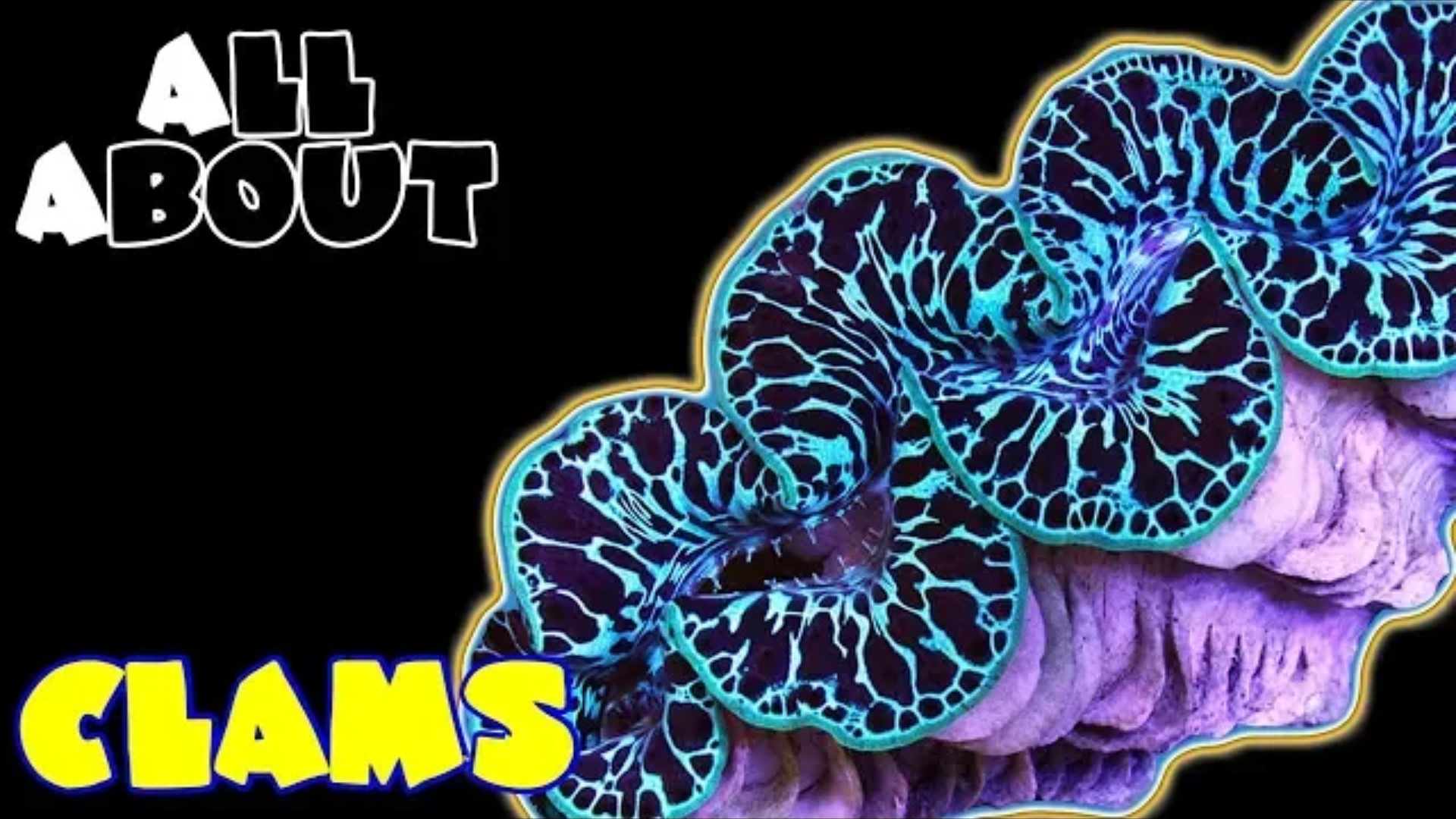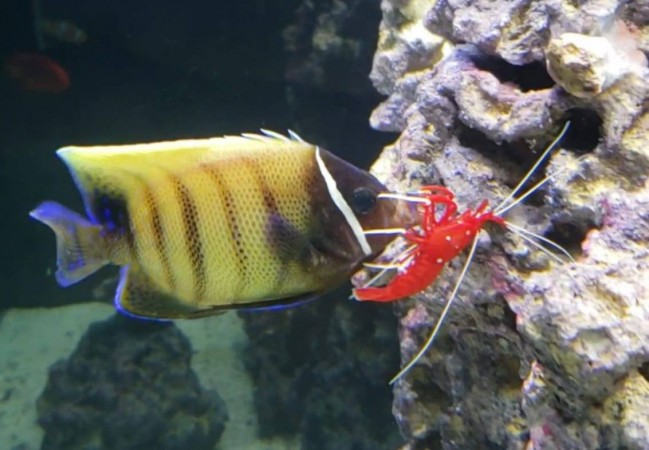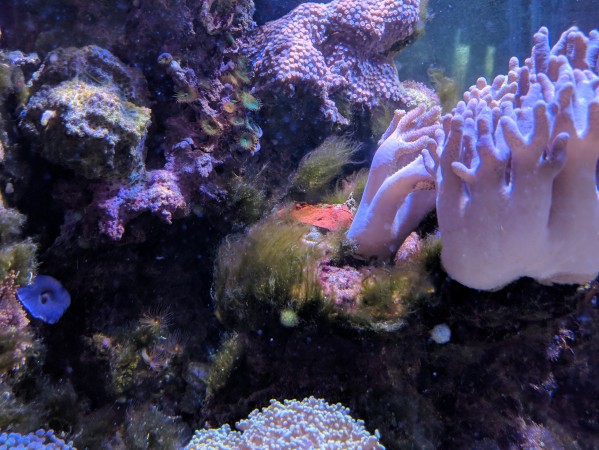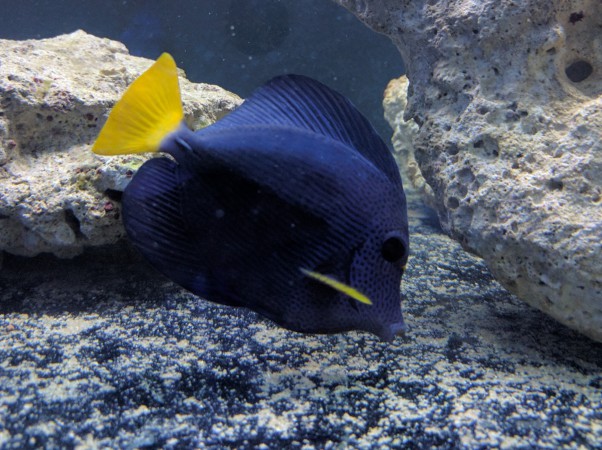- Name:
Derasa Clam, Cook Island
(View AKA's) - Family: Tridacnidae
- Species: Clam
- Scientific Name: Tridacna derasa
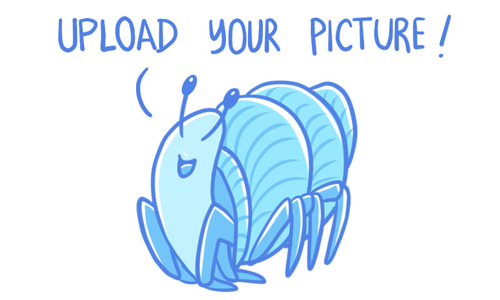
General info about Derasa Clam, Cook Island
The Derasa Clam is the most widely available and hardy of the Tridacna clams. Along with its cousin, Tridacna gigas, it was one of the of the first aquacultured species of Tridacna clams. A giant clam just sitting in still may seem like a rather unlikely choice for the aquarium. But after one look at these beautiful creatures, it is easy to understand why enthusiasts are eager to include them in their tanks. The Derasa clam, being one of the hardiest of the giant clams, is a great selection for an intermediate aquarist.
The Derasa Clam is also commonly referred to in the aquarium trade as the Southern Giant Clam or Smooth Giant Clam. The latter of these names refers to the relative lack of ribbing and scales on the shell, which sets this species apart from many other Tridacna Clams. The smoothness of its thick shell and the 6-7 vertical folds help to differentiate its species from Tridacna Gigas, its larger relative which is not as smooth and has 4-5 folds; however, in an aquarium environment scutes may develop.
All of the giant clams are members of the Family Tridacnidae, and they’re a usual bunch as far as clams go. It’s not just their large sizes, either. Most of the clams, including the tridacnids, feed by filtering tiny food particles from the surrounding waters, but tridacnids are unique because they also house an internal population of single-celled algae called zooxanthellae. These are the same type of algae that reef-building corals contain and rely on for much for their nutritional needs, and they are housed in a specialized tridacnid structure called the mantle. Actually, all clams have a fleshy mantle, but in the case of the tridacnids, it’s exceptionally large and can extend well beyond the shell of most species. As with corals, when this zooxanthellae-loaded mantle tissue is extended and exposed to strong lighting, the zooxanthellae within can make food via photosynthesis. And they can make a lot of it, too. In fact, they make far more food than they need for themselves, and the excess sugars and other nutrients are donated to the tridacnid host they are living in. This is the reason that tridacnids are always seen sitting on what would appear to be their backsides, instead of spending their lives buried in sediments or lying on their sides with only one side of their shell in contact with the bottom. As long as they are sitting upright in clear well-lit waters, with their mantle tissue facing upwards, they can gain a lot of their nutritional needs from the zooxanthellae.
Derasa Clams mantles are a mixture of orange, yellow, blue, and black and white colors, and are usually a wavy striped or spotted pattern, usually with vivid blues and greens. Derasa Clams have a narrow byssal opening and the incurrent siphon has tentacles. This species is one of the largest of the "giant" clams, and grows rapidly, reaching a maximum size of approximately 20 inches. Under the proper conditions, smaller Derasa Clams can double or triple their size in less than a year. Some specimens can reach up to 24 inches in the wild. Still, Its adult cousin the Gigas Clam is much larger, reaching over 3 feet in length. With their large size, they will need an aquarium of at least 100 gallons, and with a particular intolerance of sediment in the water, they require diligent aquarium care.
Most of the Derasa clam are cultivated in captivity. The Derasa Clams you purchase today are the result of aquaculture projects, not wild collecting. They are supplied as a food source but are also readily available to the aquarist. Clams obtained from aquaculture systems are very hardy in reef aquariums. The Derasa Clam is quite attractive and has proven to be one of the hardiest giant clams.
It does require bright intense lighting supplied by either intense power compact fluorescent or metal halide lamps to live, grow, and keep its bright colors. The type of lamp will depend on the depth of the tank and the position of the clam, with metal halide being required for deeper aquariums. A daylight fluorescent tube such as a 10,000K or 20,000K is also highly recommended. Since the Derasa Clam generates much of its food through photosynthesis, proper lighting for this species is crucial so that it survives and to promote healthy growth. This species of clam also grow to a rather large 20 inches in size and grows quickly under the right conditions, so placement within the aquarium should be well thought out.
Along with the correct lighting, the Derasa Clam will also require medium water flow, so that it may filter feed on small phytoplankton and other micro-foods within the currents. The salinity should be in the range of 1.023 to 1.027 as measured using its specific gravity. The temperature should stay in the range of about 72° to 84°F. However, somewhere around 75° to 81°F is really the optimal range you should shoot for, as this is perfectly suitable for tridacnids and gives some room up and down if your heater/air conditioner should ever fail.
When it comes to selecting the best specimen, there are a few things, in particular, to look for/avoid. First, you should avoid any specimen that stays closed up or stays opened further than what would seem normal. Failing to open up for long periods is a sure sign of trouble for any species of tridacnid, as they obviously need light to stay alive. Conversely, if a specimen simply gapes wide open and the mantle is not well extended, or even worse, is tightly retracted or looks flaccid within the shell, something is certainly wrong. A gaping shell and lack of mantle extension are typically followed by death.
Clams are very stationary and peaceful, so they are not aggressive towards other aquarium inhabitants. In the wild Derasa Clams are often associated with hard corals and they may be kept in an aquarium with them. Yet even though they have the ability to close their shell, they will need protection from anemones and some corals. They should not be kept near any stinging cell creatures and must be kept away from any sweeper tentacles. Anemones need to be watched, as they can move closer to a clam and sting or eat it.
Derasa Clams commonly have small shrimp and crabs that live in the mantle cavity. They are considered ectoparasites or commensals, and they will not harm a healthy clam. Be cautious with tank inhabitants that may pick at the clam or eat its mantles such as Trigger Fish and Puffers. Blennies, Butterfly Fish, and Clown Gobies. Angelfish and some shrimp may also disturb Tridacna clams.
Derasa Clam, Cook Island Diet & Nutrition
Derasa Clams rely heavily on the photosynthesis of the zooxanthellae cells growing in its mantle for its primary source of sustenance. For this reason, bright intense lighting is required for this species to survive and thrive in an aquarium environment. However, all clams also require micro foods designed for filter feeders, especially when small, offering such as phytoplankton and other micro-foods or marine snow provide an excellent source of additional nutrition.
Feeding is unnecessary in well-stocked tanks. As long as there are a good number of fishes there will always be detritus present, and the ammonia given off by fishes as a waste product can be absorbed by tridacnids and used, as well. Many hobbyists successfully kept numerous tridacnids of all sizes in aquaria before any sorts of phytoplankton products became popular (or even available), and any notion that tridacnids must be fed in order to thrive is simply false. Still, in the case of one or more tridacnids being kept in a very sparsely populated aquarium, there may not be enough food/dissolved nutrients present, making feeding a requirement. This would be an unusual situation, though. Basically, if all other conditions are acceptable, a specimen should grow, which can be seen when new, white calcium carbonate is added to the edge of the shell. If it does not, and you have a very low fish population, then you should use quality food following the manufacturer’s directions for use, and see if it makes a difference. Conversely, you could also start using food from the beginning, then if you can see shell growth, you may want to cut back on the amount of food being used and see if a specimen continues to grow. If it does, you can cut back more and more, until you are satisfied that no food is needed and quit using it altogether.
The concentration of calcium, the pH, and the alkalinity of the aquarium’s water are particularly important for the shell-building tridacnids too, so all three of these must be maintained at acceptable levels. Keeping calcium concentrations in the range of 400 to 450ppm is optimal, but they can be a bit lower or higher. The pH should optimally be kept around 8.2 to 8.4, and alkalinity should be kept in the range of 7 to 12dKH along with proper levels of strontium and iodine, although these often go a little higher or lower, as well. A minute amount of nitrate that is at least 2 ppm is necessary. They will not thrive at a level of 0 nitrates. The only particular thing to note is that tridacnids can reduce the calcium and alkalinity of tank water surprisingly fast. As the calcium carbonate shell grows, it’s thickened on the inside as the outside dimensions also increase. This means that there is more new shell material being produced than what you may observe and that you’ll need to pay particular attention to calcium and alkalinity, especially if you have a larger clam or several small ones.
Determining Sex of Derasa Clam, Cook Island
There are no discernible sexual differences. They are all born males then turn female as needed.
Breeding & Spawning Derasa Clam, Cook Island
Derasa Clam becomes sexually mature around 12 inches (30 cm), which is around the time they are 3 to 5 years old. The giant clams are protandry, meaning they are born male and change to female. Clams will release eggs and sperm that can number into the tens of thousands of eggs. This event tends to happen around sunset. One aquarist noted a spawning clam pulsing out eggs every two minutes. Once the eggs are externally fertilized, the embryos develop into trochophore larva, which is free-swimming. The next stage is the bivalve veliger, which sort of looks like a tiny free-swimming clam. Once they are 4 to 20 mm long, they will find a shallow area of the reef to settle into, often perching on top or on the side of coral outcrops.
Derasa Clams have been propagated in captivity, and the demand from aquarists has raised interest in producing colorful varieties of all the species. Typically, there is some sort of outside stimuli that causes spawning, which can be a change in temperature, salinity, or other parameters. However, this should be left to the experts, as clams spawning in a small system can cause serious pollution issues.
Common Diseases with Derasa Clam, Cook Island
The most important thing to mention here is the predators. The Giant Clams can be easy prey with their large and wide byssal gland opening. The most dangerous predators are the highly prolific pyramidellid snails of the Tathrella, Pyrgiscus, and Turbonilla genera. These are parasitic snails about the size of a grain of rice or smaller, rarely reaching a maximum size of about 7mm in length. These snails attack tridacnids with a trunk-like snout called a "proboscis." They punch holes into the clam's soft tissue and then feed on its bodily fluids.
While in nature, giant clams can deal with a few of these parasitic snails, in captivity these snails tend to multiply to dangerous numbers. They may hide in the scutes of the clam or in the substrate by day, but will often be found around the edges of the clam's mantle tissue or byssal gape (large foot hole) after the lights go out. They can produce numerous small, gelatinous, egg masses on the clam's shell. These masses are transparent, so difficult to spot. Before putting it in the tank, scrub your clam's shell vigorously with a toothbrush, or other brush with firm bristles, to remove the snails and their eggs. Be careful not to scrub the clam's soft tissues, as that can cause injury and lead to infection. Inspect your clam regularly for several months and remove any snails you discover.
Another common affliction of giant clams is called the Pinched Mantle disease. The edges of the mantle become pinched and contorted, and the margins won't extend fully. This condition almost always results in death unless treated, and it can spread to other clams. The actual cause of this ailment is unknown, but it may possibly be an attack by some sort of protozoan. An easy treatment, that is is stressful but effective, is to submerge the clam in a freshwater dip for a few minutes. Signs of recovery can take a day or two.
Bubble Mantle is another thing pay attention for healthy clam. It is Caused by laminar flow directed at the clam or pouring water directly into the aquarium in a way that causes bubbles to form (use a siphon and water pump and/or pour very slowly and carefully or pour into sump only). These bubbles can get stuck in the clam's mantle with can cause illness and death.
The larger of the two holes is gaping open, larger than normal. This is usually due to poor water quality. Stability of your water parameters needs to be checked quickly and addressed.
Derasa Clam, Cook Island Origin
Derasa Clams are found throughout the Indo-West Pacific. Derasa Clams primarily inhabit the outer edges of the reef. They can occur at depths between 1 to 65 feet, but they are typically found only as deep as 1 to 49 feet.
Caution with Derasa Clam, Cook Island
Giant clams are also quite sensitive to chemicals or toxic substances dissolved in the water, so be sure to maintain good water quality. High pH, high salinity, and high temperatures can also cause problems. Avoid large weekly doses of anything, especially iodine, which has been known to kill them.
Acclimating Derasa Clam, Cook Island
Tridacnids can produce an attachment structure called a byssus to affix themselves to hard surfaces. This structure is made by an organ (called the byssal organ) found on the underside of the body, which secretes a liquid substance something like spider’s silk that hardens quickly to form a number of tough fibers. These emerge from an opening in the bottom of the shell, with one end of the fibers solidly attached to a rock, coral, etc. and the other held inside the shell by the byssal organ. This keeps the clam from being knocked over or moved around by waves or predators. Thus, it is best to place a specimen directly onto a hard substrate, like a piece of live rock, or to place them on the sand with a flat piece of rock just under the surface. They can reach down through the sand and still attach to the piece, even if it is shallowly buried. Specimens that use a byssus will firmly attach themselves to the rock, typically within a few days. However, it is important to note that many clams stop using a byssus once they grow to a particular size and then slowly close off the byssal opening at the bottom of the shell. Oftentimes, they can stay in place simply due to their weight, and will then release their byssal hold. In any case, what you don’t want to do is place any specimen with an obvious byssal opening into a gap between pieces of live rock, with the opening left exposed and nothing for it to attach to. You should never place a clam in a spot that prevents it from opening its shell normally, either, or in a location where strong direct currents may keep it from fully extending its mantle tissue.
Original Detail
| Name | Species | Family | Scientific Name | More Detail | Added by |
|---|---|---|---|---|---|
| Derasa Clam, Cook Island | Clam | Tridacnidae | Tridacna derasa | The Derasa Clam is the most widely available and hardy of the Tridacna clams. Along with its cousin, Tridacna gigas, it was one of the of the first aquacultured species of Tridacna clams. A giant clam just sitting in still may seem like a rather unlikely choice for the aquarium. But after one look at these beautiful creatures, it is easy to understand why enthusiasts are eager to include them in their tanks. The Derasa clam, being one of the hardiest of the giant clams, is a great selection for an intermediate aquarist. The Derasa Clam is also commonly referred to in the aquarium trade as the Southern Giant Clam or Smooth Giant Clam. The latter of these names refers to the relative lack of ribbing and scales on the shell, which sets this species apart from many other Tridacna Clams. The smoothness of its thick shell and the 6-7 vertical folds help to differentiate its species from Tridacna Gigas, its larger relative which is not as smooth and has 4-5 folds; however, in an aquarium environment scutes may develop. All of the giant clams are members of the Family Tridacnidae, and they’re a usual bunch as far as clams go. It’s not just their large sizes, either. Most of the clams, including the tridacnids, feed by filtering tiny food particles from the surrounding waters, but tridacnids are unique because they also house an internal population of single-celled algae called zooxanthellae. These are the same type of algae that reef-building corals contain and rely on for much for their nutritional needs, and they are housed in a specialized tridacnid structure called the mantle. Actually, all clams have a fleshy mantle, but in the case of the tridacnids, it’s exceptionally large and can extend well beyond the shell of most species. As with corals, when this zooxanthellae-loaded mantle tissue is extended and exposed to strong lighting, the zooxanthellae within can make food via photosynthesis. And they can make a lot of it, too. In fact, they make far more food than they need for themselves, and the excess sugars and other nutrients are donated to the tridacnid host they are living in. This is the reason that tridacnids are always seen sitting on what would appear to be their backsides, instead of spending their lives buried in sediments or lying on their sides with only one side of their shell in contact with the bottom. As long as they are sitting upright in clear well-lit waters, with their mantle tissue facing upwards, they can gain a lot of their nutritional needs from the zooxanthellae. Derasa Clams mantles are a mixture of orange, yellow, blue, and black and white colors, and are usually a wavy striped or spotted pattern, usually with vivid blues and greens. Derasa Clams have a narrow byssal opening and the incurrent siphon has tentacles. This species is one of the largest of the "giant" clams, and grows rapidly, reaching a maximum size of approximately 20 inches. Under the proper conditions, smaller Derasa Clams can double or triple their size in less than a year. Some specimens can reach up to 24 inches in the wild. Still, Its adult cousin the Gigas Clam is much larger, reaching over 3 feet in length. With their large size, they will need an aquarium of at least 100 gallons, and with a particular intolerance of sediment in the water, they require diligent aquarium care. Most of the Derasa clam are cultivated in captivity. The Derasa Clams you purchase today are the result of aquaculture projects, not wild collecting. They are supplied as a food source but are also readily available to the aquarist. Clams obtained from aquaculture systems are very hardy in reef aquariums. The Derasa Clam is quite attractive and has proven to be one of the hardiest giant clams. It does require bright intense lighting supplied by either intense power compact fluorescent or metal halide lamps to live, grow, and keep its bright colors. The type of lamp will depend on the depth of the tank and the position of the clam, with metal halide being required for deeper aquariums. A daylight fluorescent tube such as a 10,000K or 20,000K is also highly recommended. Since the Derasa Clam generates much of its food through photosynthesis, proper lighting for this species is crucial so that it survives and to promote healthy growth. This species of clam also grow to a rather large 20 inches in size and grows quickly under the right conditions, so placement within the aquarium should be well thought out. Along with the correct lighting, the Derasa Clam will also require medium water flow, so that it may filter feed on small phytoplankton and other micro-foods within the currents. The salinity should be in the range of 1.023 to 1.027 as measured using its specific gravity. The temperature should stay in the range of about 72° to 84°F. However, somewhere around 75° to 81°F is really the optimal range you should shoot for, as this is perfectly suitable for tridacnids and gives some room up and down if your heater/air conditioner should ever fail. When it comes to selecting the best specimen, there are a few things, in particular, to look for/avoid. First, you should avoid any specimen that stays closed up or stays opened further than what would seem normal. Failing to open up for long periods is a sure sign of trouble for any species of tridacnid, as they obviously need light to stay alive. Conversely, if a specimen simply gapes wide open and the mantle is not well extended, or even worse, is tightly retracted or looks flaccid within the shell, something is certainly wrong. A gaping shell and lack of mantle extension are typically followed by death. Clams are very stationary and peaceful, so they are not aggressive towards other aquarium inhabitants. In the wild Derasa Clams are often associated with hard corals and they may be kept in an aquarium with them. Yet even though they have the ability to close their shell, they will need protection from anemones and some corals. They should not be kept near any stinging cell creatures and must be kept away from any sweeper tentacles. Anemones need to be watched, as they can move closer to a clam and sting or eat it. Derasa Clams commonly have small shrimp and crabs that live in the mantle cavity. They are considered ectoparasites or commensals, and they will not harm a healthy clam. Be cautious with tank inhabitants that may pick at the clam or eat its mantles such as Trigger Fish and Puffers. Blennies, Butterfly Fish, and Clown Gobies. Angelfish and some shrimp may also disturb Tridacna clams. |
Admin |


